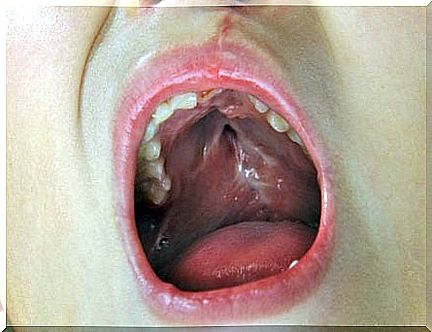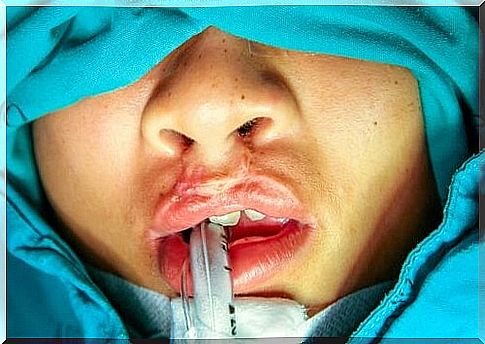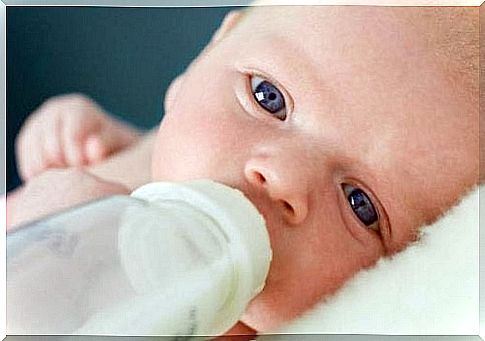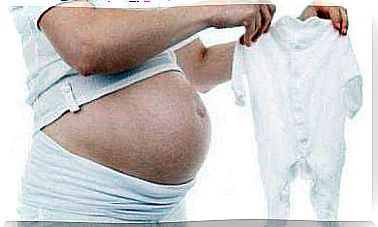Children With Cleft Palate: Everything You Need To Know

Our palate, the solid area at the top of our mouth, can develop with several malformations. The most typical is a palate fissure or cleft palate.
This congenital defect can lead to eating and drinking problems. It is often confused with a cleft lip as both are conditions that develop early in pregnancy. However, it is not the same.
A cleft palate and cleft lip may occur separately or together. The former is a crack directly in the palate, which extends up to the nose.
The latter is an opening from the upper lip to the nostrils. Both conditions require surgery to correct the defect and avoid complications.
What causes cleft palate?
This malformation affects about 1 in every 700 children. It occurs when the tissue that exits the lips and palate does not meet properly.
Both nuisances and environmental factors can affect it. Mutations have been detected in the genes, which are sensitive to damage from tobacco, alcohol and vitamin deficiencies.
Family history is also relevant, such as taking certain medications. Substances are associated with a higher risk of cleft palate, including those used to treat seizures, cancer, rheumatoid arthritis and acne.
Doctors have not ruled out the possibility that exposure to certain chemicals or viruses may also trigger changes of this type.
There are about 350 syndromes known to cause this defect, among other clinical symptoms.
One of these is Van der Wouder syndrome (VWS), which is associated with a change in the genes IRF6 and GRHL3.
If this variant of the genes associated with this syndrome has been identified in the family, a prenatal diagnosis may be possible.

Diagnosis of cleft palate
If the upper jaw does not completely fuse together during pregnancy, a crack may remain at the top of the baby’s mouth. This is what we call a cleft palate.
The “cleft” can occur in the hard palate at the front of the mouth, or in the softer tissue near the throat (the soft palate).
It can even spread to the nasal cavity, or affect the lips.
Unlike a cleft lip, this condition can be difficult to detect during pregnancy and it does not show you on an ultrasound scan.
This means that doctors are not aware of a cleft palate until the baby is born.
The crack can be very small, or can form a large hole that can cause problems with breathing, feeding or communication.
The most pressing problem in cleft palate babies is their inability to create a vacuum inside the mouth so they can suck.
The milk they drink can come out through the nose. It can make them spit it out, and increases the risk of suffocation.
With this in mind, parents of cleft palate babies should use a special bottle to feed them, and have the baby operated on as early as possible.
Complications associated with cleft palate
A child with cleft palate is vulnerable to chronic infections in the ears, and may have difficulty communicating.
These complications can often give rise to emotional and psychological conflicts.
If so, a child psychologist can help deal with the underlying problems.
If the crack extends to the lip, the defect is visible. This type of cleft palate can also affect the health of the teeth, making the baby’s teeth crooked, and prone to cavities.
Furthermore, it can affect the shape of the nose.

Despite all this, it is important to keep in mind that a cleft palate is not a disease.
With the right treatment, children with cleft palate can live a normal life.
Until the child has had the correct surgery, it is important to keep them in an inclined position. This ensures that they can always keep their nose clean and they are not at risk of being suffocated if they vomit.
Surgery to correct a cleft palate
Corrective surgery, for children with cleft palate, is fragile process.
While cleft lip can usually be operated on when the baby is about 3 months old, one often waits to operate on a cleft palate until the child has held his 1-year-old birthday.
Depending on the severity of the defect, the number and type of surgery required may vary.
Generally, surgeons will need to close the hard and soft palate, correct the structure of the lips and nose, fill in gaps in the gums, shape the bone structure, and perform anesthetic procedures.
This can be a long process that requires a great deal of patience.
It is not always possible to close the crack completely. If so, doctors may often suggest using a denture to make it easier to eat.
Is it possible to prevent cleft palate? Acquiring healthy habits during pregnancy, and taking vitamins (folic acid and vitamin A) can help.
However, since it is a congenital defect with various causes, it is difficult to avoid. What is important for parents to understand is that it is not a serious condition and there are solutions available.









